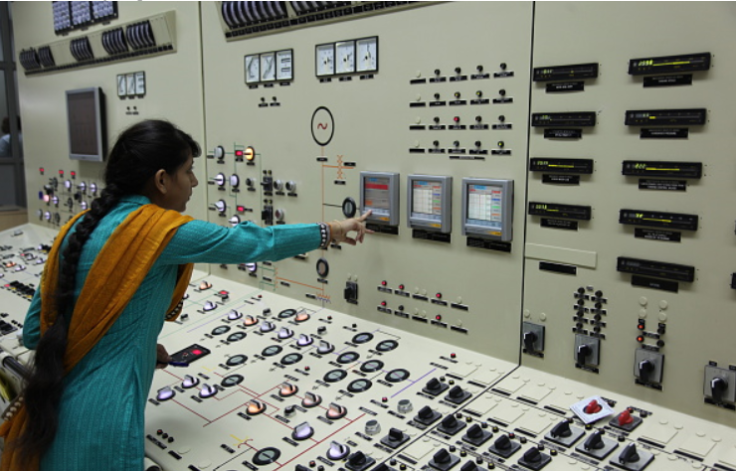
The Feminist Foreign Policy (FFP) approach has been the first major institutional step in the pursuit of gender inclusivity in policy since the adoption of the Women, Peace and Security (WPS) agenda by the United Nations Security Council Resolution (UNSCR) 1325 two decades ago. The FFP framework brings to light the long-standing conversations and debates on how women and other marginalized groups are represented and disproportionately impacted by national security policies and discourses. Specifically, this framework advocates the mainstreaming of a gendered approach to foreign and security policy thought and practice by challenging existing power structures, with the objective of attaining gender equality and justice for marginalized groups through policy decision-making.
As more countries begin announcing their feminist foreign policy, it is worth discussing an FFP approach for India, where women constitute almost half of its population but remain politically and socio-economically disempowered. The views expressed here come from the premise that addressing gender-consciousness in policymaking is at the foundation of formulating an FFP. Extrapolating this specifically to the nuclear domain, this article explores what a gender-conscious approach to nuclear security politics in India would entail and the mechanisms and tools that can further an FFP framework in India’s national security. While gender-conscious policymaking and an FFP are desirable, there is a need to go beyond the arguments of representation. This article also attempts to envision the steps that can be taken at the strategic community and government levels in the nuclear security field to enhance gender-conscious thinking and action within the context of the United Nation’s WPS agenda.
Mainstreaming Gender Perspectives in India’s Nuclear Discourse
Scholars conducting research on India’s defense and security issues have rightly observed the “paucity” of dialogue in the country on gender in security and nuclear politics and policy, and getting to an FFP-like framework is still a distant step. This article argues that a good starting point for an FFP in India’s defense and nuclear policy fields would be to stimulate conversations in the direction of mainstreaming gender perspectives in India’s overall national security discourse.
In India, while the strategic community is brimming with women members—scientists, researchers, academics, bureaucrats, and security personnel—there is a conspicuous dearth of women in security policy leadership roles.
Across much of the world, national security discourse remains male-dominated and lacks a systematic and institutionalized gendered-approach. The case is even more pronounced when it comes to discourses around traditional security issues—such as military strategies, warfare, defense policies and weapons technologies—where women and gender-perspectives are deliberately left out because of the systemic categorization of these (military and strategic) issues as intrinsically or inherently “masculine”. This continues despite more women working in the defense and security sectors now than ever before. In India, while the strategic community is brimming with women members—scientists, researchers, academics, bureaucrats, and security personnel—there is a conspicuous dearth of women in security policy leadership roles.
A gender-conscious framing of security policy is guided by two important questions: who feels the impact of policy and who gets to make the policy decisions? Studies have shown that women and other disadvantaged socio-economic groups are disproportionately impacted by security policies, even nuclear policies. A gender-conscious approach therefore essentially suggests increasing the representation of women in security policy decision-making and bridging the gap between the gender and security discourses.

Representation is a key, but not the only, pillar of an FFP. An FFP includes enabling greater space, access, and resources to women and other marginalized groups to have their voices heard and their insights shape policymaking. It is important, however, to recognize that greater representation is a “means” for a gender-conscious approach, and not an end in itself. The approach should therefore be mindful of the common pitfalls of approaching these challenges through representation alone. For instance, on nuclear issues, seminar agendas are sometimes designed in ways that relegate women to talk about disarmament, arms control, humanitarian impacts and other issues traditionally characterized as “doveish and feminine.” On the other hand, all-women panels on security issues are projected and celebrated as statements on gender but not on security policy. A gender-conscious approach in security policy should be able to go beyond these trappings.
As Jayita Sarkar puts it, this means that we as analysts need to look more closely at “how the field of nuclear security policy is populated and structured” in our own countries and how the identities of its members are shaped by their work. As much of FFP literature and theory emphasizes, an intersectional approach is critical to understanding identities in the context of strategic cultures—women in security wear multi-layered identities that shape their thinking, experience, and determine their access to security discourses. A 2005 report published by Women in Security, Conflict Management and Peace (WISCOMP), a pioneer in initiating the discourse on women, peace, and security in South Asia, particularly underscores the premise of intersectionality. In the report, the author A. Subramanyam Raju analyzes how India’s women scientists looked at a range of nuclear issues, from weapons to power plants. Raju concluded that the scientific community of women in India is “far from homogenous” in their views on nuclear issues and that “women scientists” perceptions of nuclear issues are determined by their position and their area of study, rather than by virtue of being women.” Raju’s report was one of the first systematic gender-disaggregated studies on nuclear issues in India. Unfortunately, such organized and data-driven analyses of national security and foreign policy are not undertaken commonly in India or South Asia.
Thinking Through an Indian FFP approach for the Nuclear Question
Mainstreaming gender-perspectives in India’s national security and nuclear politics discourse and formulating an FFP that applies to these fields requires concerted efforts to be undertaken at the governmental level and the strategic community level.
Sections of India’s strategic security and nuclear community have occasionally raised the gender question in the military and foreign policy discourse. These efforts have manifested in the forms of published literature, high-level dialogues, professional networks, and social media support to amplify women’s voices. Over the past year, this has primarily surfaced as criticism for all male panels (or “manels”), particularly in the security field. While these are worthy efforts that contribute toward better gender-consciousness, they are also sporadic endeavors that are unlikely to automatically transform into mainstreaming the gender-conscious approach. For that, more organized and systematic efforts are needed. One way of doing this is for organizations to adopt the WPS agenda institutionally and adopt organization-level action plans to implement that agenda.
As much of FFP literature and theory emphasizes, an intersectional approach is critical to understanding identities in the context of strategic cultures—women in security wear multi-layered identities that shape their thinking, experience, and determine their access to security discourses.
Along with the insistence for greater representation and thematic discussions on gender and security, the strategic community needs to also engage with the more nuanced aspects of exclusion and language, beyond the gender binary. Encouraging and facilitating solid and systematic research are key to this effort. On nuclear issues—from safety and security to dangers of nuclear use, gender-disaggregated data-backed research including surveys and polls, specifically, can be extremely valuable in enhancing participatory dialogue and democratic engagement, since these issues affect the lives of people as much as governments. These studies can be undertaken at the academic as well as administrative levels. For instance, the Swedish Government, in its latest action plan for FFP, fittingly places the focus of its Foreign Service on “advancing improved gender analysis, including statistics” apart from bettering gender-balanced representation.
At the state and government level, India needs to commit more forthrightly to the United Nation’s WPS agenda and UNSCR 1325. Although India supports the WPS agenda through its peacekeeping efforts, various regional development-focused activities and domestic schemes and programs for gender-equality, it has not adopted the National Action Plan for implementing the United Nation’s WPS agenda. The National Action Plan represents an institutionalized commitment, mandating the implementing country to set definite goals, timelines and budget toward fulfilling the WPS agenda. Therefore, in order to progress toward an FFP, the Indian government should adopt a National Action Plan as well as a national-level domestic policy on WPS in all spheres of governance and decision-making, including defense, security or nuclear policy. An Indian FFP approach would have to confront head-on the glass ceiling that results in women being absent in security and nuclear policy leadership roles. India, as a major power in Southern Asia, can also facilitate the adoption of regional action plans on WPS by leveraging its numerous regional and international networks.
For a state in which patriarchal structures are still deeply entrenched, implementing the WPS agenda would require tremendous investment of time, resources, and commitment from the government of India. Even then, it is important to keep the conversations about gender-consciousness in the strategic and security fields going; because in the state of the discourse in which these conversations are happening, we in India, are still refining the articulation of the questions that this approach seeks to address, the measures it seeks to advocate and the changes it hopes to bring about.
Editor’s Note: Since Sweden announced a Feminist Foreign Policy in 2014, several other nations have also begun this journey, however the conversation and frameworks are largely rooted in western countries. In this series, run jointly with the Kubernein Initiative, contributors from across the subcontinent discuss what it means to have a “feminist foreign policy,” and how this approach could merge efforts in foreign affairs, regional policy and geopolitics, development and women’s empowerment in South Asia. The series asks to what extent countries in South Asia have incorporated a Feminist Foreign Policy approach, and the ways in which a gender-conscious approach may support security, democracy, and diplomacy on the subcontinent.
***
Click here to read this article in Urdu.


